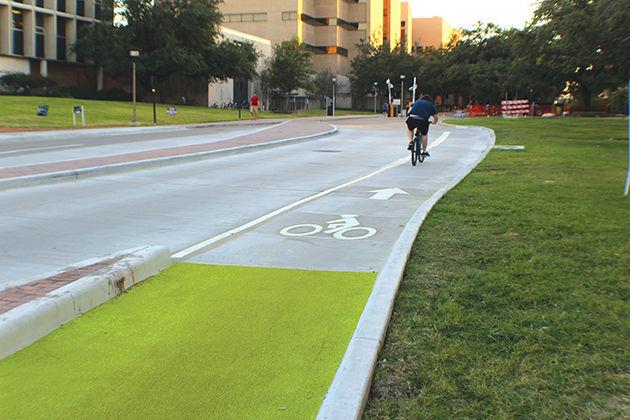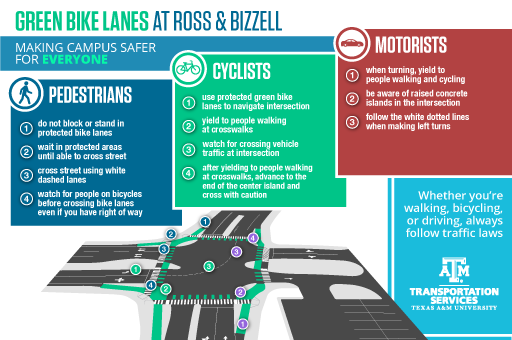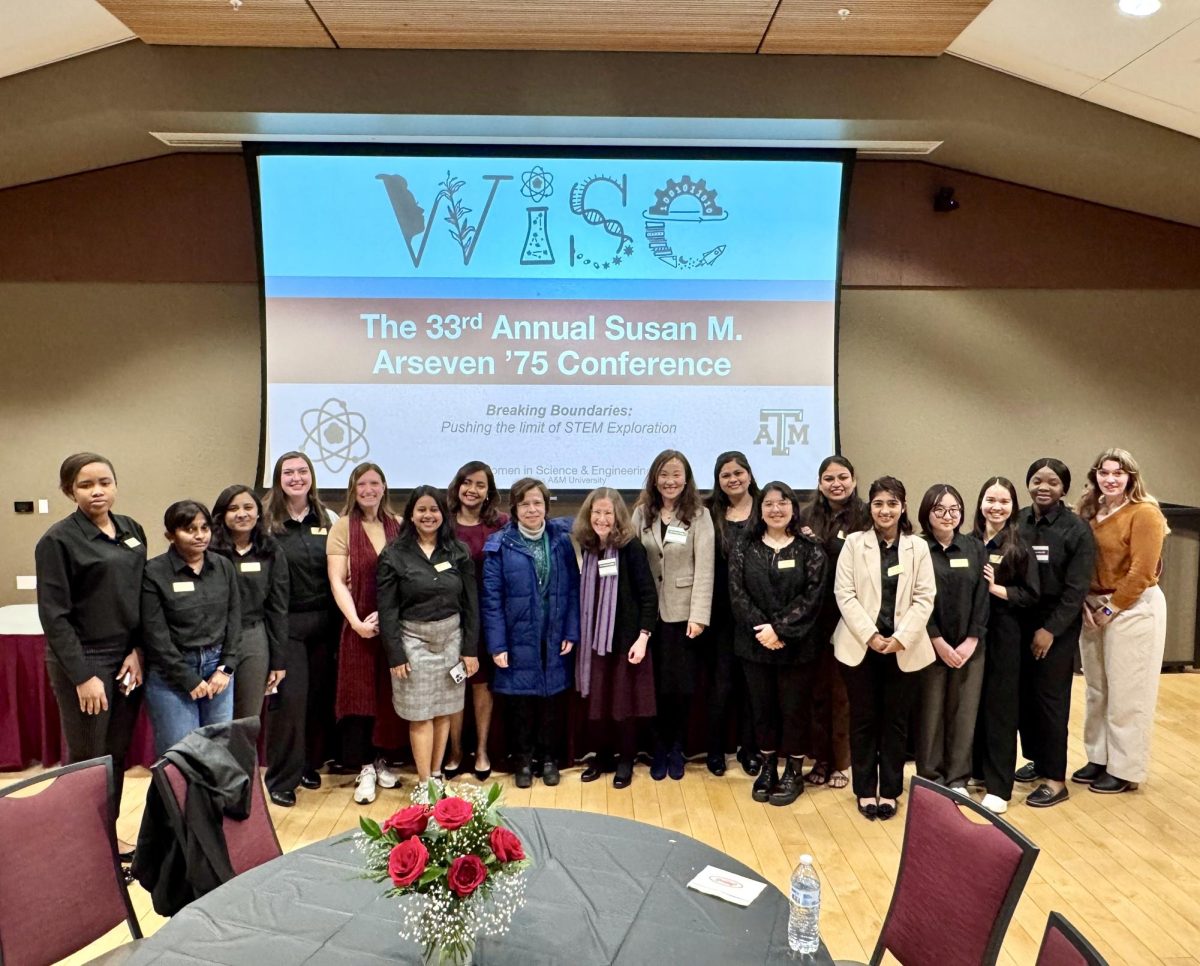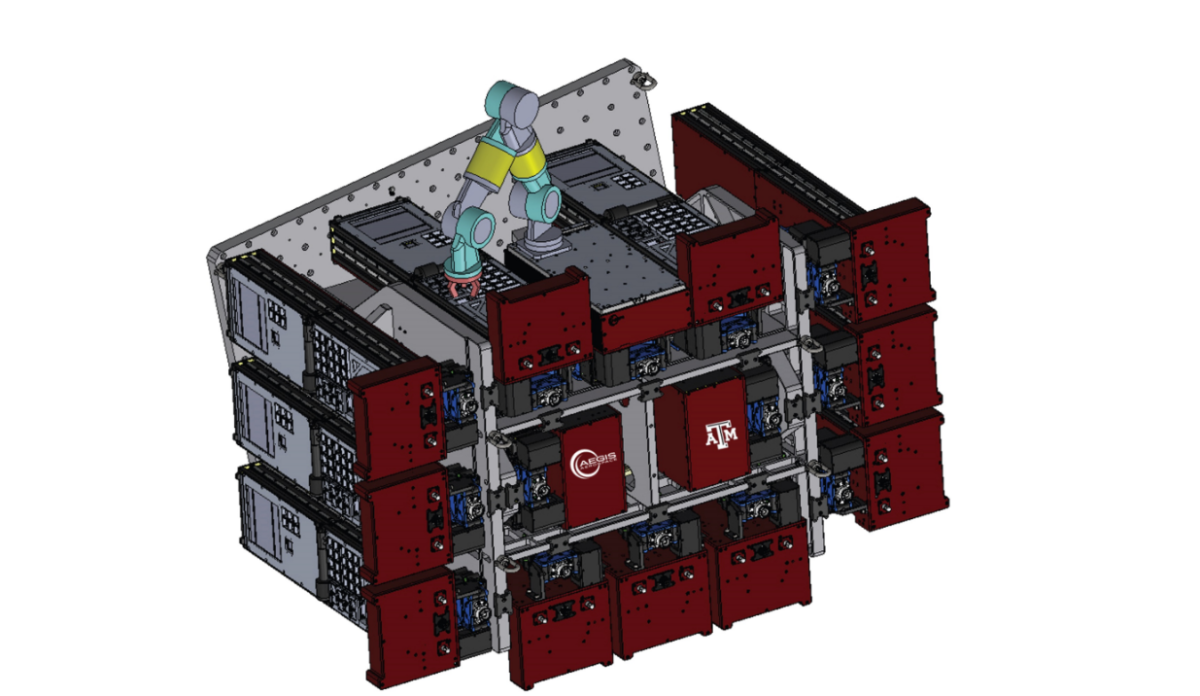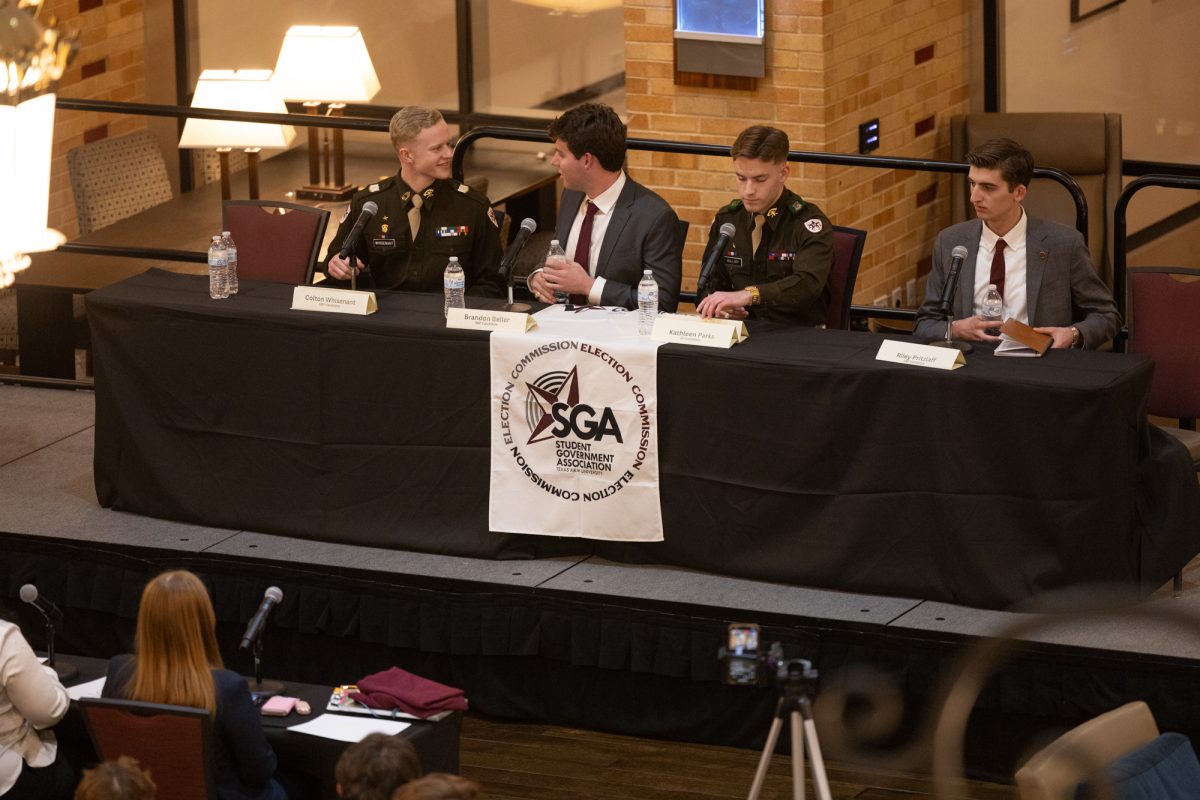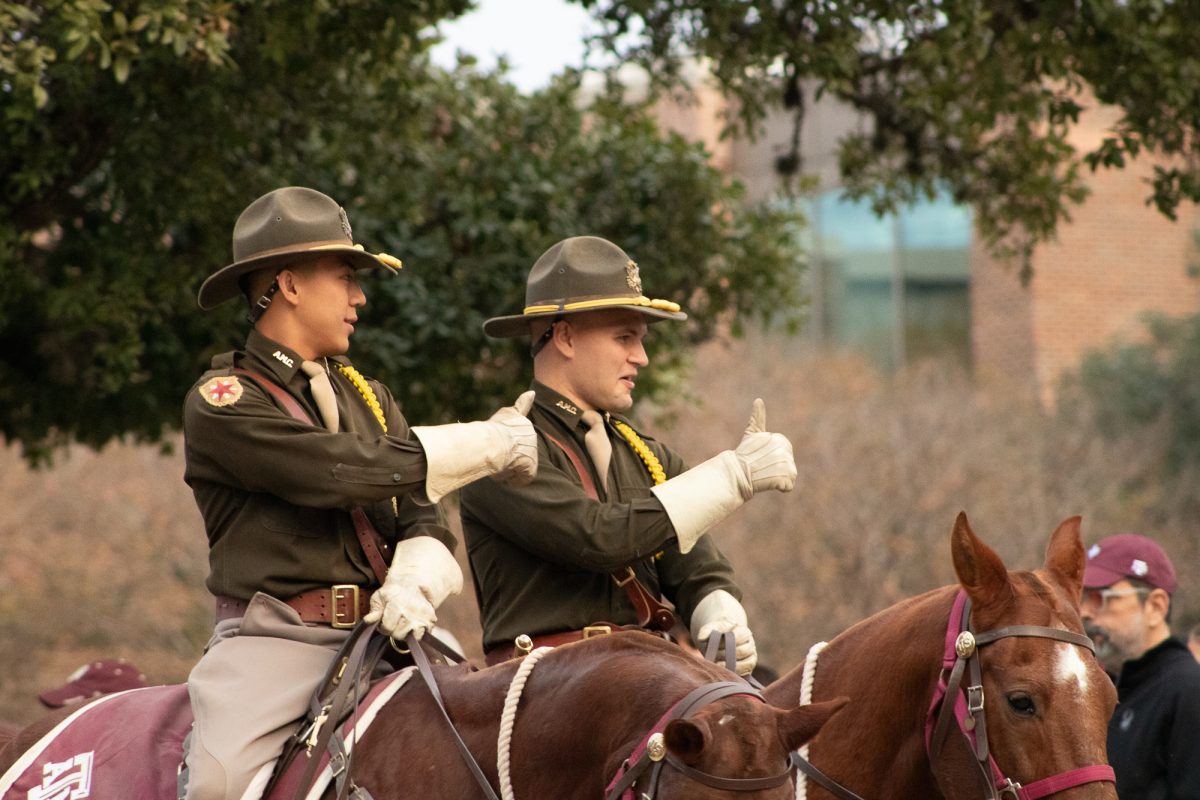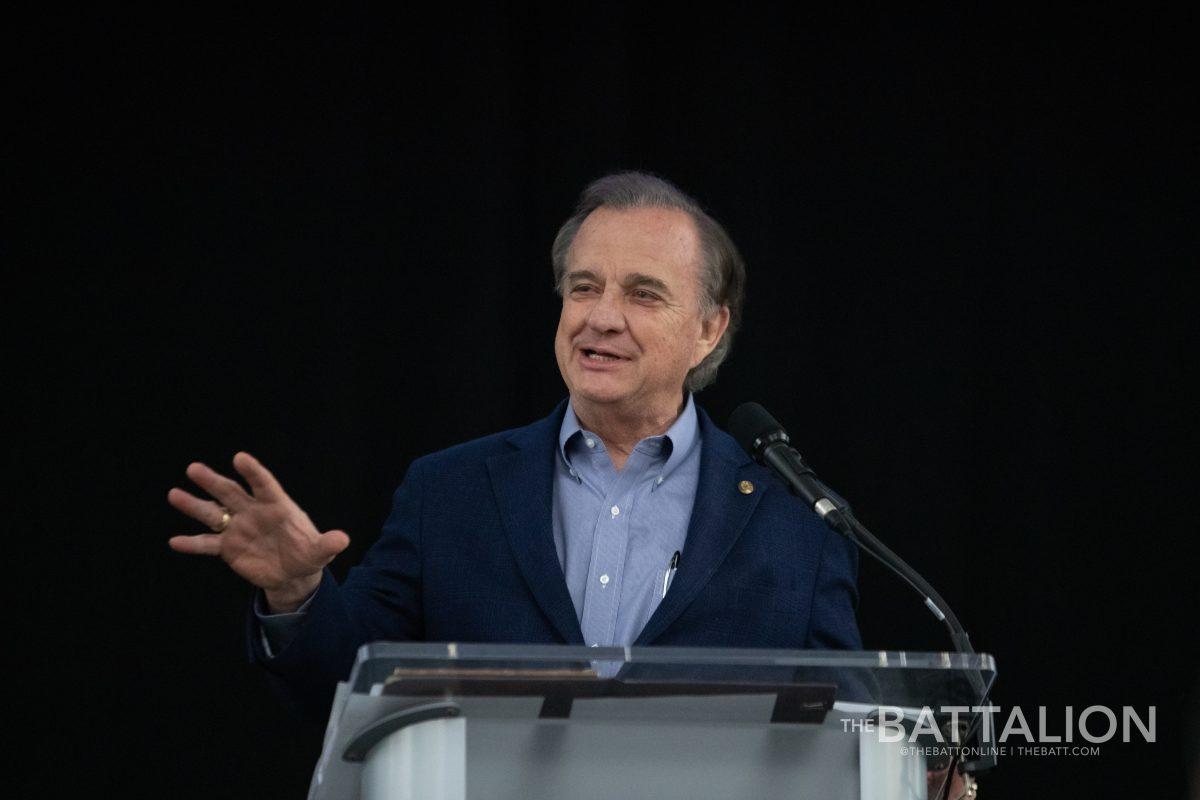Once the lights flickered off, sighs of relief and hushes of excitement echoed throughout the intersection at Ross and Bizzell as the green glowing paint illuminated the bike path — the first unsignalized Dutch-style intersection in the United States.
With the intersection being the busiest one on campus, the four corners depicting the streets Ross and Bizzell are now part of a Dutch junction — originally developed in the Netherlands. The goal of the glowing paint is to ensure safety amongst cyclists, motorists, vehicles, and pedestrians as well as amplify protection and mobility. Initiated by the Texas A&M Transportation Institute and Texas A&M Transportation Services after conducting a campus bike study that concluded in 2015, the solar-powered paint will store energy during the daytime and emit the light at night. Furthermore, cars proceeding to turn right or continuing down a straight path have the ability to see the cyclists prior to mobilizing, as the right turn is protected for the cyclist.
According to Senior Research Scientist of the Texas A&M Transportation Institute, Robert Brydia, the science behind the bike lanes is explained by green materials, environmental as well as colorful.
“It’s one hundred percent post consumer recycled glass … that material is then infused with green paint, so that’s the color that you see at all times,” Brydia said. “Then what we do is we take all of that material, and we add in a mineral that is photoluminescent so it absorbs solar power during the day, and then in darkness it slowly dissipates that same energy. And when it dissipates that energy, it glows- the glow that illuminates the green paint around it through the glass, so that’s how you get the green glow.”
Peter Lange, Associate Vice President of Texas A&M Transportation Services, said he foresees further implementations of the glowing green paint expanding on campus in the future.
“I think we have the opportunity to do some green markings related to where the gate arms are on the limited access streets so the cyclists better know where to go … I think that is the low hanging fruit that we could do pretty quick,” Lange said.
Being the first of its kind in the United States, the Dutch junction glow in the dark bike lanes are bound to spread to other universities according to Lange. For example, people from Vanderbilt University Parking and Transportation visited campus Monday and Tuesday to observe bikes, buses, and parking in general.
“And then, from another university perspective or other municipality is I think they’ve had a couple phone calls from folks interested in what’s going on,” Lange said. “It’s not just research or cutting edge things that are happening at Texas A&M that the world’s following — there are little things that are happening all the time that are great examples of innovation that are very practical and implementable.”
Teresa Qu, professor for the Landscape Architecture and Urban Planning Department, is conducting a quantitative analysis with a research method class to examine the new modernization, as the College of Architecture building is near the intersection and many students will take this route to class.
“We observe how many violations occur at this intersection,” Qu said. “For example, today we came to count the traffic and the cyclists who actually follow the green paint across the street or turning left; we will also count how many cyclists did not follow the green paint. In two weeks, we are going to count the cyclists again at this intersection again at this intersection and see whether the number of cyclists that follow the paint increase, so that tells you if people are getting a better idea of how to use the intersection.”
Education proves to be a major aspect contributing to the increased safety of students, said Melissa Maraj, Communications Manager for Texas A&M Transportation Services.
“It is important for people to get as much education about how to properly use not only the Dutch junction but the green bike pathways so they can travel safely throughout this area,” Maraj said. “As soon as people understand that the green pathways are their guide, it will kick start the muscle memory for cyclists and keep them safe.”
Brydia said this new addition to campus exemplifies the initiative commenced by President Young, as the Dutch junction was brought in from a different country to College Station, Texas.
“President Young started an initiative where the basic idea is to ask companies to come into campus and bring their innovations, their best ideas from research, new products, new technologies, and bring that into campus,” Brydia said. “And allow campus to be a living laboratory.”
With A&M designated as a “bike-friendly campus” in the fall of 2015, Maraj stated that the green pathways and Dutch junction withal encourage this title.
“The green bike pathways and the Dutch junction are additional measures of safety for pedestrians, drivers and cyclists,” Maraj said. “Students have so much of their lives ahead of them and anything we can do to prevent accidents or injury is going to benefit us all.”
Innovative bike lanes light up campus intersection
October 5, 2016
Photo by Photo by Yuri Suchi
First glow-in-the-dark, unsignalized dutch-style intersection in the U.S. were implemented at A&M.
0
Donate to The Battalion
$1415
$5000
Contributed
Our Goal
Your donation will support the student journalists of Texas A&M University - College Station. Your contribution will allow us to purchase equipment and cover our annual website hosting costs, in addition to paying freelance staffers for their work, travel costs for coverage and more!
More to Discover




